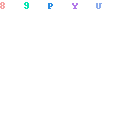Since 2001, the report has been considered a reference for the virtual commerce sector in Brazil, collecting information directly from more than one million points of sale.
That's why we've gathered the main e-commerce statistics gathered by the 50th Webshoppers , in order to provide a more in-depth view of the market to guide your company's strategies for 2025.
The report provides data for the first half of 2024 and compares it with the same half of the previous year, for analysis criteria.
So, let's go?
Contextual data on the Brazilian economy
To understand e-commerce statistics in Brazil, you must usa email database first take a step back and understand our economic scenario as a whole.
In 2024, Brazil experienced a slight economic recovery , with a drop in the unemployment rate and an increase in consumer confidence.
However, inflation still poses a challenge, driven mainly by the food and beverage sector.

Source: 50th edition of Webshoppers .
The Broad National Consumer Price Index (IPCA), the main inflation indicator, recorded an accumulated increase of 4.71% in food, impacting the purchasing power of Brazilians and influencing their consumption priorities.
Despite this, the gradual recovery of the economy paves the way for the strengthening of e-commerce , which is gaining relevance as a more convenient and often more economical purchasing alternative. The food and beverage sector, in fact, was the one that saw the most growth in the first half of 2024 in online commerce — as we will see shortly.
Consumer confidence also remains relatively stable, with an index of 91.1% in June 2024. This may reflect cautious optimism among Brazilians, who are now returning to the job market and feel more confident about spending, especially after the crises of 2020 and 2021.
Source: 50th edition of Webshoppers .
So, as we said, this whole scenario has a positive impact on the growth of e-commerce in the country, which continues to expand year after year. Let's see:
E-commerce grew by double digits in the first half of 2024
Source: 50th edition of Webshoppers .
Brazilian e-commerce grew 18.7% in the first half of 2024 , reaching revenues of around R$160 billion.
Double-digit growth demonstrates the accelerated expansion of the sector, and Brazil stands out as one of the main e-commerce markets in Latin America.
According to Statista , the average growth of e-commerce in Latin America was 14.7%, therefore, the Brazilian market exceeded this rate.
And, in terms of active consumers, our growth is even greater. We had a 25.7% increase in users who buy online , which demonstrates the growing adherence of Brazilians to the digital market.
E-commerce as the second largest revenue channel in Brazil
Source: 50th edition of Webshoppers .
E-commerce has also reached the position of second largest revenue channel in Brazil , behind only traditional physical retail, known as self-service.
This performance reflects the increase in consumer digitalization and the penetration of e-commerce in regions such as the North and Northeast, which previously had a lower share of digital commerce — we will talk more about this later.
For companies, this means that being online is no longer optional . Implementing well-defined digital strategies is essential for brands that want to gain relevance and expand their reach in the Brazilian market.
Which categories had the highest number of requests?
Source: 50th edition of Webshoppers .
In the first half of 2024, fast-moving consumer goods (FMCG ) led in order volume , representing essential and high-turnover items such as food, beverages, and health and beauty products.
E-commerce is the ideal channel for this type of purchase, due to the convenience it offers consumers when restocking these types of products online, in addition to the fast delivery options and promotions.
Overall, the categories with the highest growth in the number of orders according to Webshoppers were, respectively:
Food and beverages;
Health;
Perfumery and cosmetics;
Sports and leisure;
Babies and co;
Home appliances.
Furthermore, the home appliances category showed a notable recovery in 2024 , returning to growth in the number of orders and in its share of total e-commerce revenue.
This increase reflects a cycle of renewal of products that many consumers acquired during the pandemic, such as refrigerators, washing machines and especially air conditioning units, driven by the high temperatures in the country.
This context also shows that Brazilian consumers see e-commerce as a safe and accessible option for purchasing higher-value durable goods, taking advantage of easy payment terms and direct delivery.
Source: 50th edition of Webshoppers .
It is also interesting to highlight the types of products that were most requested by subcategories:
Medicines - Health products and basic medicines.
Sunscreen - High demand due to hot weather.
Coffee - Popular for both replenishment and daily consumption.
Body Moisturizer - Demand for personal care due to dry climate.
Hair Shampoo - Essential Hygiene Products.
Source: 50th edition of Webshoppers .
The prominence of fast-moving items and appliances in e-commerce may reflect a mixed trend in digital consumption : while basic products are purchased frequently and maintain a high volume of orders, durable goods categories present demand cycles that can be driven by seasonal factors, such as weather, and by innovation in the products offered.